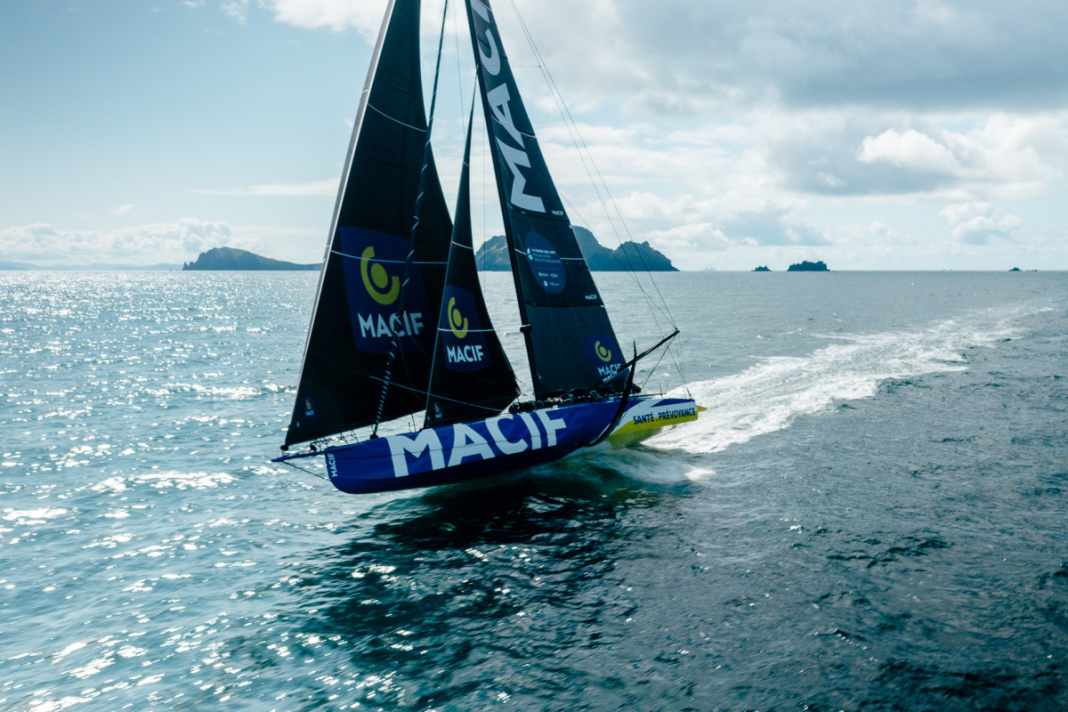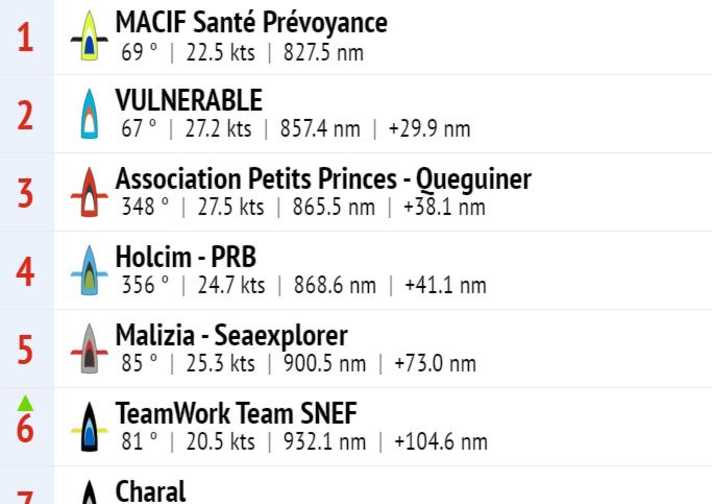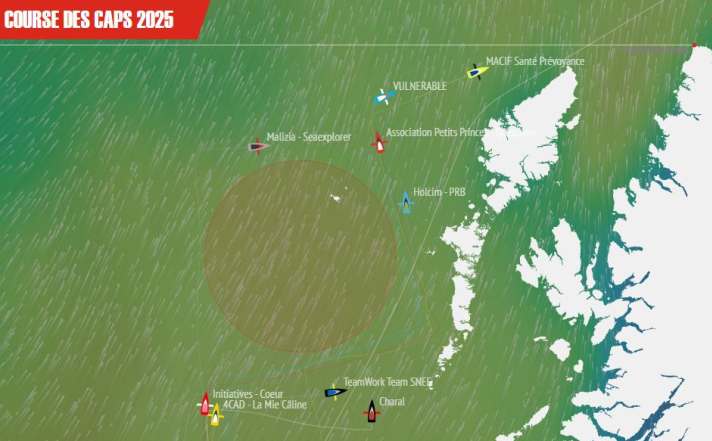





The long-awaited speed boost at the Course des Caps - Boulogne-sur-Mer - Banque Populaire du Nord has materialised. Since Wednesday afternoon, the ten remaining Imoca yachts have been sailing northwards through a strong south-westerly wind at over 20 knots. This acceleration is a radical contrast to the slow first days of racing and now allows the teams to utilise the full potential of their yachts.
The new dynamic is already having an impact on the classification. The fleet now covers a distance of 270 nautical miles - the change of pace is increasing the differences between the competitors. At the front of the field, "Macif Santé Prévoyance" is steadily extending its lead. Skipper Sam Goodchild and his team have now sailed almost 30 nautical miles ahead of their nearest rival, "Vulnerable", impressively confirming their strong form since the start of the race. Yesterday the course was shortened by 220 nautical miles.
"Malizia - Seaexplorer" lost some ground to "Macif" during the night and is now 73 nautical miles behind. It will be interesting to see at what distance the fleet regroups after the military exclusion zone.

Race mode on board
The abrupt change in speed has fundamentally changed the crews' everyday lives. After days of weak winds and laboured progress, the sailors are now in a mode that requires maximum attention.
Julien Villion, navigator and co-skipper of Boris Herrmann's "Malizia - Seaexplorer", describes the new situation vividly: "We're finally travelling at top speed! I think we've covered as much distance in ten hours as we did in the previous two and a half days. We are now regularly travelling at over 30 knots. We've switched on 'pony mode': Blinkers on and full throttle to make progress as quickly as possible."
This high-speed phase fundamentally changes life on board. Villion: "You can no longer cook comfortably and walk around barefoot. Now we're crawling around inside and doing jumps in the bunk... but that's the game. Life is less pleasant, but since it won't last too long, let's take our chances."
Tactical decision off the Hebrides
As the fleet sailed further north, an important tactical point, the Hebrides, drew closer. The military training area off the Scottish archipelago marks the halfway point and forced the teams to decide on a route. The four leading boats decided to sail close to the coast of the Outer Hebrides. "Malizia - Seaexplorer" on the other hand (and possibly other following teams) chose a course further out to circumnavigate the exclusion zone. These tactical decisions could prove decisive at this stage of the race.

Looking ahead
North of the Scottish archipelago, the teams are confronted with decreasing winds. Their next destination is Ronaldsay on the Orkney Islands - the northernmost point of the route at 59° north. The leading group is expected to reach this turning point early Thursday afternoon.
Francesca Clapcich, co-skipper on "Malizia - Seaexplorer", is already looking ahead to the challenges ahead: "We have to keep sailing the boat as fast as possible and then be able to change speed again quickly when the wind drops. Then we have to adjust the sails in good time." Julien Villion summarises: "Every mile gained now will be decisive for the rest of the race." The course of the Cap therefore promises exciting battles for position in the coming days.
